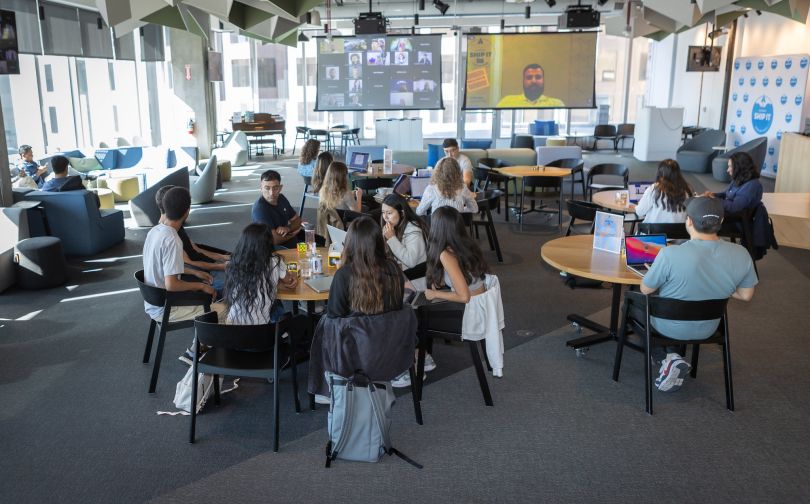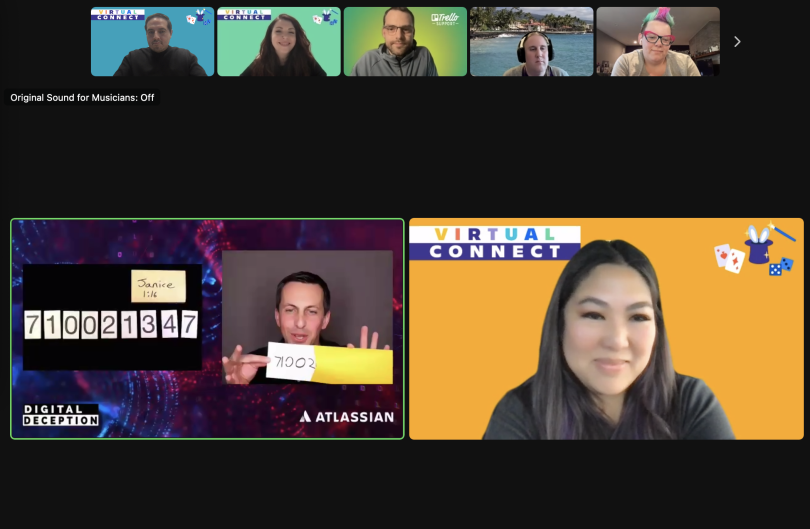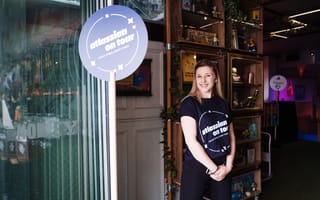When a company loosens its grip on the traditional in-office work model, it can have a transformative effect.
It enables people to do their jobs in a way that’s effective for them. It improves a company’s ability to seek out talent. It is freeing.
But it also introduces new challenges.
“The biggest challenge is: How do we collaborate effectively in this distributed world?” asked Preeti Kota, an engineering leader at Atlassian.
As the creator of collaboration and project management tools like Jira, Confluence and Trello, Atlassian is in a unique position to ensure its team can effectively collaborate. Which was a big influence in the development of its distributed work model, dubbed “Team Anywhere.”
How do we collaborate effectively in this distributed world?”
“At the heart of Team Anywhere, we’re saying we want to build diverse teams that are outcome-focused and work well together — and we shouldn't be bound by physical location,” said Kota, who noted that the move to Team Anywhere was not pandemic-driven, but was being developed pre-pandemic.
Group Escalation Manager Arnold Taylor echoed Kota’s sentiments about team cohesion, noting that, despite having never met some of his colleagues in person, he still feels “a genuine connection that’s beyond Slack.” He also expressed that the model positions team members to make meaningful contributions and scale their work effectively at the company.
“It gives you the flexibility to manage your schedule, in a way that you can deliver impact,” he said. “You can communicate effectively with different teams and different groups. You can get up to speed a lot faster, because all of the information is available. This way of working supports different people’s styles.”
As successful as “Team Anywhere” is, there is always room for improvement. That’s why Product Marketing Manager Amanda Gitahi was grateful to have observed a willingness to refine the approach to the model.
“We really are taking a thoughtful approach as a company,” she said. “There’s work constantly going on to experiment with new ways of meeting asynchronously or coming together for intentional reasons. There’s a real commitment to continuously improving the experience of ‘Team Anywhere’ here.”
THE NUTS AND BOLTS OF TEAM ANYWHERE
The Team Anywhere model has enabled hundreds of Atlassian team members to relocate — many to different countries — and has helped Atlassian itself grow from 5,500 in late 2020 to 9,500 today. The rules of Team Anywhere are that team members can:
- Work in-office, at home or both
- Be located where Atlassian has a legal business entity and there is sufficient time zone overlap with their team
- Work for up to 90 days per year outside of their home base
- Stay connected through virtual meetings or asynchronous communications, which are the default methods in Team Anywhere
Flexibility, Collaboration and Connection
Based out of Richmond, Virginia, Arnold Taylor leads nine escalation managers as the group manager of the AMER region for Atlassian’s global escalation team (which also includes escalation managers in the APAC and EMEA regions).
“Escalation managers are our critical customer champions,” Taylor said. “They handle the big hairy customer pain points that need assistance.”
In escalation management, speed, smooth collaboration and clear communication with internal stakeholders is of the essence. It requires a lot of interfacing with internal stakeholders — like support leadership, product management and development teams — in order to get to the root of an issue. According to Taylor, the number of perspectives needed can often swell, with necessary collaborators spread across different time zones.
And that reality is a major reason why Taylor values the Team Anywhere model.
According to Taylor, the ability to work either synchronously or asynchronously — he’s big on screen sharing Confluences pages, recording videos and sharing with colleagues — is a major benefit for his team. To him, three core attributes stand out when it comes to working remotely: flexibility, collaboration and connection.
“The flexibility in how we work allows me to lead in the way that best suits the team members and also the situation,” he said.
The flexibility allows me to lead in the way that best suits the team members and the situation.”
Taylor added, “Because of the model, it’s easy to collaborate with people all over the world. I still am in awe at the number of people who I work with, rely on, depend on and have a good relationship with. I’ve never met them, but I still feel a professional — and sometimes personal — connection, even though we’re all over the world.”
Prioritizing Personal Needs
Amanda Gitahi’s three-plus years at Atlassian have seen her moving to a handful of different spots around the United States — and she’s had the flexibility to travel outside of the country, as well.
A product marketing manager for Atlassian’s IT service management market, Gitahi moved from Arizona to California after getting hired at the company. But relocating to San Francisco meant taking a different route from her husband — whom she met in grad school — who took a role in Seattle.

Their respective moves meant being in a long-distance relationship for nine months, ending soon after the pandemic’s early days of mandatory quarantines. After shifting to a remote-work model, Gitahi subsequently decided to move to Seattle.
“Atlassian was extremely supportive of that,” she recalled. “It was right around the time they were putting together the Team Anywhere policy.”
After two years in Seattle, Gitahi and her husband returned to Phoenix — a move she said was made possible thanks to Team Anywhere.
“It felt really great to be supported by the company at that moment,” Gitahi said, noting that her ability to live — and relocate — together with her husband had been weighing on both of them since their long-distance stint. “Is one of us going to have to give up a job that we really like?” she wondered. “Having the support of Atlassian took all of that stress out of it.”
“It's been a great opportunity to be able to both move back to the place that we wanted, but also keep this job that I love. I'm super grateful for that,” she also noted.
It’s been a great opportunity to be able to both move back to the place that we wanted, but also keep this job that I love. I’m super grateful for that.”
The model was also helpful when it came to visiting her husband’s family in Kenya. Gitahi credited her managers with being extremely supportive of her travels there: the reprieve from meetings — due to the time difference — allowed her to focus on “in-the-weeds” work for a short period, then unplug for the remainder of the trip.

Scaling Engineering Work
Based out of Sunnyvale, Preeti Kota has been with Atlassian for more than a year and heads up engineering for Compass, a developer experience platform that brings one’s distributed software architecture and the teams collaborating on them together in a single, unified place. “Our goal is to bring the developer experience platform from idea to reality,” Kota said.
For Kota, turning this idea to a reality means leading four squads, with team members across Australia, New Zealand and the United States. She noted that one of the biggest challenges of leading a distributed team is navigating the significant time gap between colleagues.
Taking an intentional approach to interacting with one another and favoring asynchronous communications over what Kota called “high-bandwidth synchronous communication channels” is what allows the team to be successful and productive.
“The thing that we do really, really well at Atlassian is that we collaborate effectively in an asynchronous way,” Kota said. “We have a strong written culture. Sometimes we even say, jokingly, ‘If it's not in Confluence, does it really exist?’”
The thing that we do really, really well at Atlassian is that we collaborate effectively in an asynchronous way.”
Being conscientious of one another’s schedules goes a long way, too.
“Not everything is an urgent need. I might choose to wake up at 5 a.m. and start doing my work. But that doesn’t mean that every other person that I work with is available at that time,” Kota said. “We respect everybody’s time zones, hours, work-life balance ... It’s a combination of all of these things that lets us be effective as a team anywhere in the world.”
THE ATLASSIAN WAY
To keep Compass moving forward in the distributed environment, Kota said the team is guided by the “Atlassian Way,” which has four phases:
- Wonder: essentially, asking the right and relevant questions, and focusing on the customer problems that need to be solved
- Explore: research
- Make: where engineering starts building
- Impact: monitoring the impact
At the end of the day, Kota is focused on setting up her team to produce something tangible that resonates with customers — and populating a team with talented engineers, without having to consider geographies, empowers her to do just that.
“We are focused on building diverse teams: finding the right talent, wherever they might be,” Kota said. “We’re no longer tied to what you can do within a physical location.”







